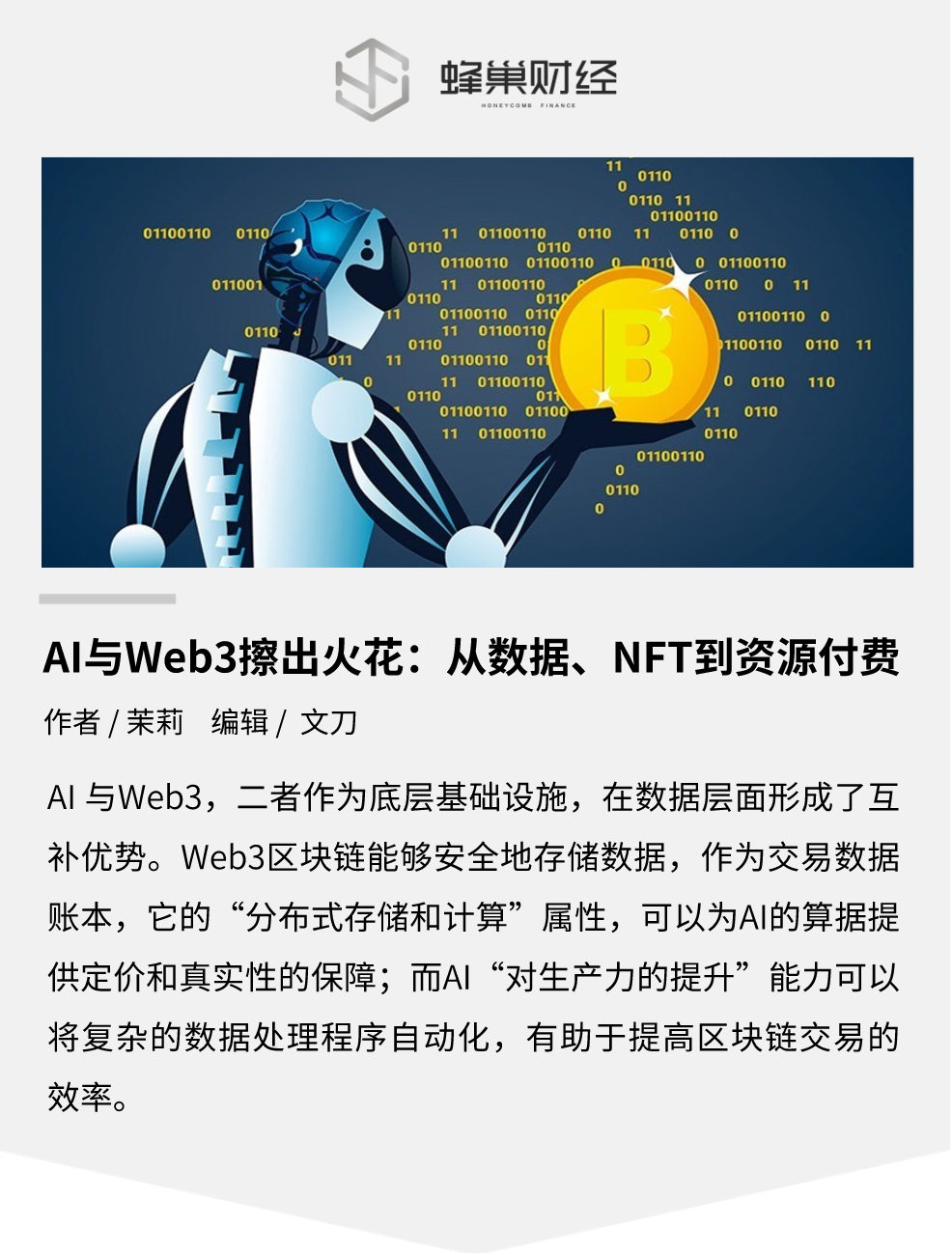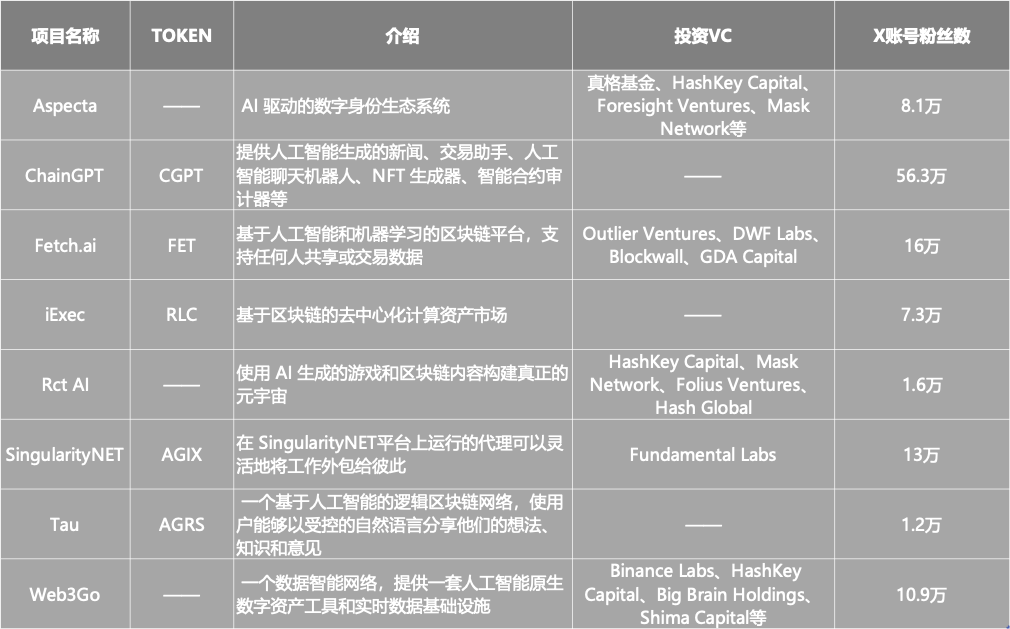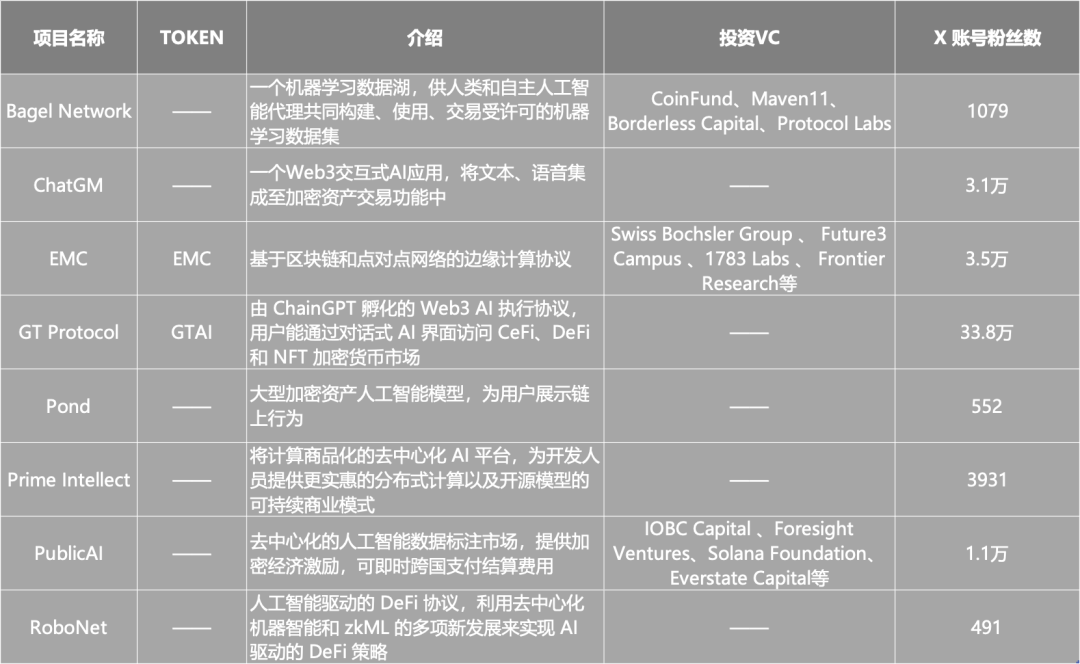
With the popularization of AI large models, the integration of AI and Web3 has become a hot sector in the cryptocurrency market, and the two technologies have exploded with potential in the application of "data."
The foundation of the current popular artificial intelligence natural language large model is the "three calculations," one of which is "data calculation." In theory, the larger the dataset provided for the large model, the stronger its learning and prediction capabilities after effective training. The underlying blockchain technology of Web3 is essentially a distributed database, and the chain-like structure of packing data by time forms the characteristic of data being tamper-proof.
The two may have complementary advantages. Web3 blockchain can securely store data and, as a type of ledger, its "distributed storage and computation" attribute can provide pricing and authenticity guarantees for the AI's data calculation layer. AI, on the other hand, can enhance the efficiency of blockchain transactions and automate complex data processing procedures.
An example is the automation of on-chain transactions, which can be applied in the cryptocurrency market. AI-driven algorithms can track market fluctuations, analyze large-scale data, identify patterns and trends, and execute transactions based on predefined criteria.
AI can also be applied to the security of blockchain, using machine learning algorithms to inspect transaction data, identify suspicious trends or anomalies, and continuously learn from the data to avoid new risks.
Although both AI and Web3 are still in their early stages, the former is believed to have the potential to bring about changes to Web3 and even the cryptocurrency market. According to a report from Fortune Business Insights, the blockchain artificial intelligence market was valued at $220.5 million in 2020 and is expected to reach $973.6 million by 2027, with a compound annual growth rate of 23.6%.
Taking stock of AI+Web3 projects, it is not difficult to find that the current eight early leading projects have mainly leveraged the "AI-enhancing productivity" feature, applying the capabilities of AI large models and machine learning to the underlying technical infrastructure or specific applications of Web3, including:
- Applying AI's multimodal generation (AIGC) capabilities to NFT generation;
For example, ChainGPT (CGPT), this blockchain artificial intelligence solution not only provides common text content generation and AI chatbot functions in the Web2 world, but also serves as an NFT generator. Another example is Aspecta, which has built an AI-generated identity system that links Web2 and Web3 accounts, forming community connections based on the account holder's experiences and interactions, and accessing different DAOs and applications.
- Transforming AI's machine learning capabilities into tools/platforms for building Web3 applications;
For example, Fetch.ai (FET), which is an infrastructure for developing decentralized applications, utilizes AI's automation technology to provide tools for creating and connecting intelligent agents, helping users perform complex tasks in the digital economy.
- Applying Web3's distributed storage, transactions, and computing capabilities to the production materials/resources needed for AI development;
For example, iExec (RLC), which is a blockchain-based decentralized computing asset market that aims to connect resource providers with resource users, allowing anyone to rent computing power and datasets. Another example is the decentralized artificial intelligence service network SingularityNET (AGIX), which allows users to publish services on the network for demand-side payment (cryptocurrency) integration.
 Eight early AI+Web3 leading projects
Eight early AI+Web3 leading projects
In addition to the above eight early leading projects in AI+Web3, some new "players" are also making their way onto the track.
Focusing on the most obvious intersection of "data," some projects have utilized the distributed nature of blockchain to address data monopolization issues.
For example, Bagel Network has created the concept of a "machine learning data lake," allowing users to store all structured and unstructured data at any scale, supporting data scientists and AI engineers to access/exchange authorized and verifiable datasets in a low-cost and privacy-protecting manner. The goal of Bagel Network is to build a decentralized data platform to support machine learning (ML) models.
Many new projects have directly applied AI capabilities to the most prominent financial applications of Web3, including the trading and payment areas of cryptocurrency assets.
For example, GT Protocol, incubated by ChainGPT, is a cryptocurrency AI execution protocol that allows any entity or individual to create a DeFi smart contract pool, using AI to collect and manage user-contributed liquidity, leveraging AI's automation capabilities while also utilizing the transparency features of smart contracts on the chain.
 Eight new AI+Web3 applications
Eight new AI+Web3 applications
It can be foreseen that in 2024, the development around AI's large models and their applications will continue to advance in an ever-increasing manner, and the world of Web3, which loves to chase hot topics, will continue to follow the trend of AI. The evolution and integration of these two technologies will also contribute to the growth of the AI sector in the cryptocurrency market.
(Disclaimer: Readers are strictly advised to comply with local laws and regulations. This article does not represent any investment advice.)

免责声明:本文章仅代表作者个人观点,不代表本平台的立场和观点。本文章仅供信息分享,不构成对任何人的任何投资建议。用户与作者之间的任何争议,与本平台无关。如网页中刊载的文章或图片涉及侵权,请提供相关的权利证明和身份证明发送邮件到support@aicoin.com,本平台相关工作人员将会进行核查。




